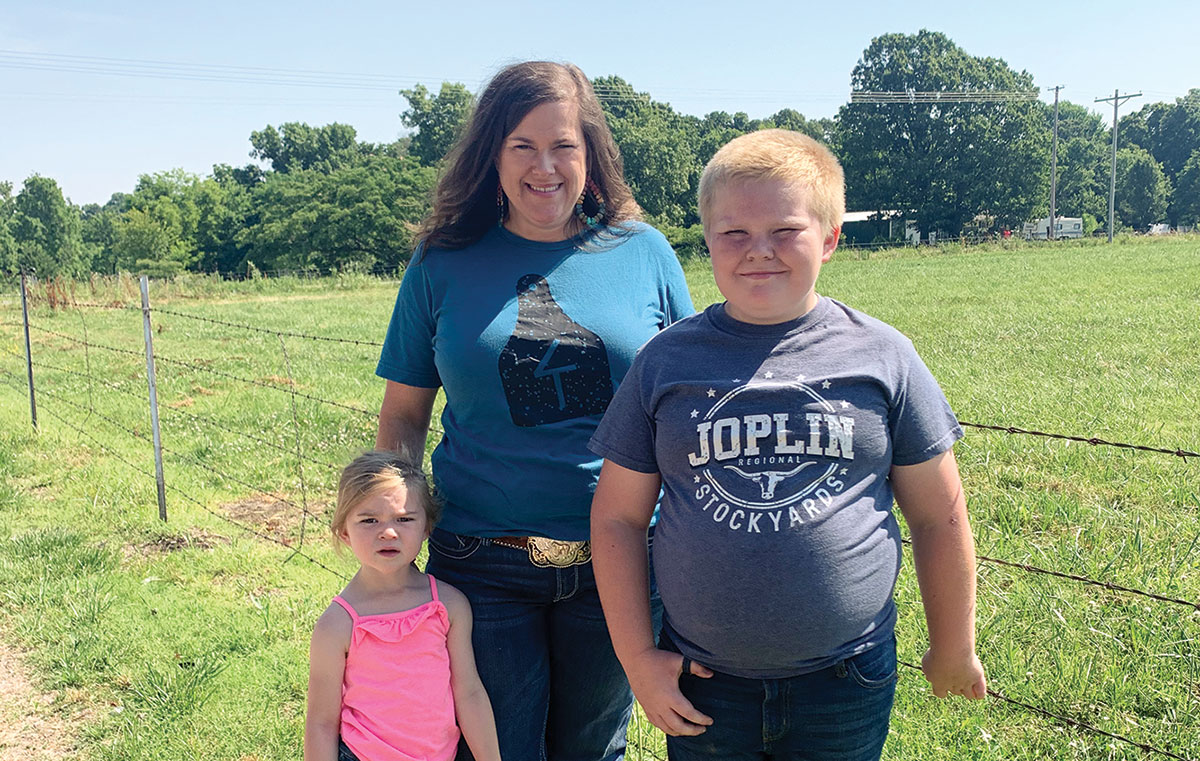 Chris Sinning and wife, Amber, live on an 80-acre farm in Wright County near Norwood, Mo., with their three daughters; Holly, Emily and Addyson.
Chris Sinning and wife, Amber, live on an 80-acre farm in Wright County near Norwood, Mo., with their three daughters; Holly, Emily and Addyson.
Chris has been an agriculture teacher at Norwood High School for almost 10 years. He is also teaching his daughters important lessons on the farm. Holly and Amber are learning to show cattle, but Chris explained, “We show to let the girls learn those skills. We don’t do it for us.”
He said they aren’t in it to raise show cattle, but to “teach them (Holly and Amber) how to take care of the cattle, and how to present them. If you’re going to market your cattle, even at sales, you’ve got to take good care of them. Showing also teaches work ethic.”
The cattle don’t have to “look like national champions, but they need to look good if you’re going to present them to people. Those cattle will bring more money,” Chris said.
Chris has around 50 cows and 50 calves. Out of those 50 cows, about 30 are registered Angus. The rest are Angus composites.
His daughters are not the only ones learning. Chris started out with registered Brangus. “I bought my first heifer when I was in FFA. That’s where it all started.” He said that over the years “one thing led to another and we ended up with about 30 Brangus females. We purchased a few more along the way.”
He learned that “the marketability is a little bit weaker in the Brangus.” To balance the scales in his favor, he sold all but his best three Brangus cows. He bred those three to Angus and Hereford. “That was our commercial base, so 90 percent of our commercial cows go back to those three cows.”
“In 1992 is when we really started artificial insemination with the Brangus and started crossing them. We kept that herd and moved it more toward registered Angus.” Chris explained his decision. “I don’t know that Brangus were necessarily bad cattle, but in this area they’re not as well-received. For us to do a good job, we have to have premium on our bulls, because we take our value that we get out of our bulls and put it right back in our cow herd.”
Chris is now learning about genotyping. He said, “We’ve just got started. I’ve gone to several meetings on the genotypes. We’re just now starting to pull blood.” He explained that by snipping the ear, blood is taken from the animal. “Then a 50,000 marker panel is run that can determine what they are going to be able to produce as far as birth weight, weaning weight and yearling weight, all of our carcass traits.” He added, “In the future they are going to be able to tell disposition.”
Genotyping can be done on an animal when they are only a day old. This type of technology gives the producer the advantage of knowing an animal’s traits and complete EPD profile at an early age. They don’t have to ‘wait and see.’
Chris said, “The biggest thing about the genotyping is the accuracy level.” He added, “One of the biggest prohibitors has been cost, but it is becoming more affordable.”
The technology is very new and Chris stated, “It’s not widely accepted yet. A lot of people are skeptical about whether it’s going to work. From what I’ve seen, it’s going to allow small Angus producers to have a shot at being more competitive.”
“We haven’t actually tested any of ours yet,” Chris said, but explained, “We plan to snip all our herd sires. A bull is half your herd, if not more. He’s half of every calf. It’s hard to use too good a bull.”
Learning is a big part of life and Chris said the biggest change he has seen in the beef industry is “the level of education of our customers. I think our customers are more in tune to using performance data, using EPDs and using selection criteria that’s a little out of their norm. They’re more receptive.”
The best advice Chris has to offer any future beef producer is, “Don’t be scared to buy the genetics you want. Don’t let price necessarily influence you and don’t buy one just based on price. Buy the most affordable genetics you can, within your budget. I’ve never went wrong buying the best cow.”







